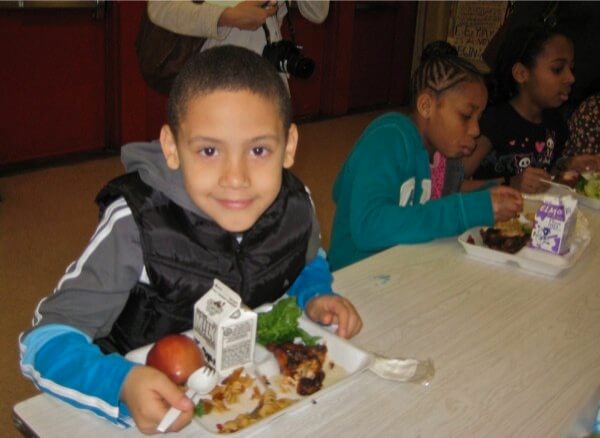By Gina Martinez
Hunger Free America released its annual hunger report showing the state of hungry workers and families in New York. The organization surveyed multiple soup kitchens and pantries across the city and state and found that in New York state nearly 3 million people, and in New York City approximately 1.4 million people, lived-in food insecure households in 2013-2015, meaning they could not always afford enough food. This compared to 2006-2008, when 2.3 million people were food insecure statewide and just under 1 million citywide.
“It is unconscionable that in the richest city in the history of the world, one in five kids still can’t always count on enough food,” Joel Berg, CEO of Hunger Free America said. “It is equally unacceptable that a third of our charitable food pantries and soup kitchens lack the resources to meet the growing need.”
The survey found that 11 percent of Queens residents, or one in nine, lived in food insecure households from 2013-2015. It also found that 16 percent of Queens children were living homes without adequate food and 10 percent of Queens seniors were living in food insecure homes in that same time period.
The survey from the organization, which used to be called New York Coalition Against Hunger, spoke to feeding programs like food pantries and soup kitchens in Queens to get a better understanding of their needs. The results showed that the need for food and services has risen, but the funding and supplies were not enough. Just over 24 percent of responding agencies in Queens reported not having enough food to meet current demand. Of those 83 percent said that if they received more food, they would have enough capacity like storage space, refrigeration and staff to increase the amount of food they distribute. Some 5 percent said they would not have the capacity to accommodate an increase in the amount of food they distribute.
Responding agencies also said they see an increase in the number of people coming in for food, while 70percent of agencies noted an increase in the number of people they served over the past year and 31 percent reported the number of clients increased greatly. The survey revealed that the pantries are under funded and underemployed, with 72 percent of agencies claiming they could benefit from having additional funding to buy and distribute more food. In addition, 52 percent of the responding food pantries wanted additional resources to build partnerships and collaborate with other community organizations for referrals or joint programming.
Berg hopes that the federal government makes the necessary changes to fight the hunger epidemic. He called on President-elect Donald Trump to create jobs, raise wages, and bolster the federal food safety net.
He also urged Trump to stop House Speaker Paul Ryan’s plans to slash the Food Stamp program in order to pay for more tax cuts.
“The soaring hunger levels in New York and throughout our country harm health, hamper education, trap families in poverty, fuel obesity, eviscerate hope, and thus drag down our entire economy and place our national security at risk,” Berg said. “Hunger harms us all. But ending hunger lifts us all. We must build a grass roots movement and force our political system to enact the economic policies and social programs necessary to end U.S. hunger once and for all.”
Reach Gina Martinez by e-mail at gmart

































